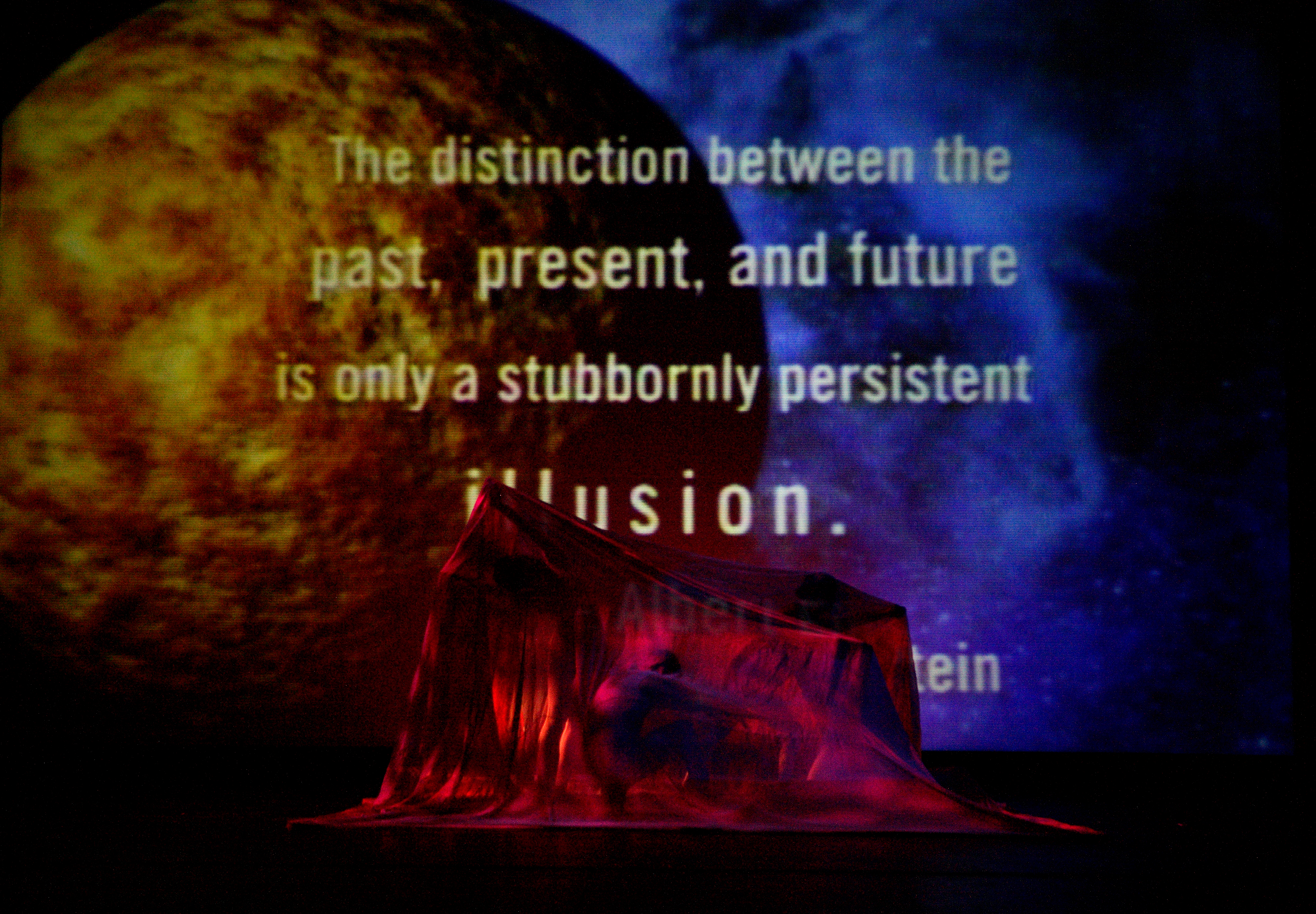Shot in the Dark
(above, still image from “Rage to Know” a 2005 live collaboration between Donna Sternberg, Kate Johnson and Michael J. Masucci)
Last week, the In the Dark project submitted its proposal to the Los Angeles County Museum of Art’s LACMA Lab grant program.
For the application, I decided to change the name to In(the Dark), after collaborator Vanessa Blaylock correctly noted the original name’s similarity to Joe Frank’s great radio/performance art program. I also think the use of parenthetical notation (as in mathematical equations), speaks to the vocabulary of the science which first inspired this admittedly ambitious project. It remains to be seen if the new name sticks, but I actually now think it has more commonality with the process of this project, than the old name. But for purposes of discussions, I’ll continue to use the original name “In the Dark”.
In so many ways the In the Dark project that we’ve been imagining is perfect for this grant. Both conceptually, as well as in terms of practicability. All the collaborators have extensive backgrounds in utilizing the current tools and techniques of our time. All have proven track records of projects involving art and science. And all are practicing, and highly experienced artists.
But I think we do realize that the difficulty in translating those facts to the panelists effectively make this proposal a shot in the dark. On paper, the application should be a ‘sure thing’, but of course, in today’s art-funding climate, that is never the case.
I have served on many grants panels over the years, and have come to understand the complexities involved in choosing ‘the few from many’. It is among the hardest things I get to do. Invariably, there are many more equally qualified and worthy applications than can ever be awarded. Often, it comes down to the personal tastes, or interests, of the panelists. On more than one occasion, we’ve literally flipped a coin.
Panelists, curators, art historians and all other gatekeepers must be judged as much by what they do not include as what they do decide to include. The projects that are selected for LACMA Lab will become a bold and influential statement on the world stage, concerning the interests which a major museum places on certain types of artistic explorations. I’m sure that whatever projects get chosen, they will be valuable experiments/experiences for the Los Angles art community. I hope In the Dark is one of them, of course, but will understand if it is not. The competition will be fierce, and I’m sure that the panelists will have a very difficult job ahead. We should know their decision on or before April 18th.
One thing I am well aware of, is how some panelists might question whether such a small creative team, can accomplish what we are proposing. A dance company, a 30 piece orchestra, networked avatar performance and high level media art? At what is still a very modest budget? Again, an accurate scrutiny of our collective backgrounds should affirmatively answer that concern. The still image above, from a live multimedia piece from almost a decade ago, shows an art based practice of similar ambition. Only today, the tools are greatly more enhanced. And now we also have friends with a new and exciting orchestra (the Venice Symphony Orchestra), looking to be involved in interesting and innovative, site-specific projects
Those of us involved in arts based research, are often interested in the process of art making, and how to convey that process through documentation, experimentation and discovery. In that I firmly believe that art and science are more in common than either side generally admits.
Living in a city where economic diversity is so broad, we are sensitive to how to allow access to as many people as possible. This project imagines audience attendance which can be ticketed and charged for (within the museum walls), as well as free of charge, either outside of LACMA by the live symphony orchestra, or also free around the globe, via cyberspace.
In our current world, where so many cultural decisions are made by ‘middlemen’ (sexist choice of wording intentional), the market-driven focus on audience size, attendance numbers, event tickets sold, etc, puts the value on the consumer. The end-user’s role in the process of cultural development is obvious, and certainly must be given much due consideration. But the artmakers’ voice must also become more valued. It is there where the experimentation occurs, resulting in our ever-increasingly diverse cultural fabric. Informed and respectful of the past, while thirsting for the discoveries of the future. All valid, all contributory, all interactive.
Perhaps ultimately it must be our fellow artists themselves who are final determinants to what is influential, innovative, seminal and necessary. It is interesting to see what the gatekeepers value, but we might also begin to pay more attention, through forums such as this one, as to what art works get made, and do not get made. In such a way, even projects which are not deemed ‘worthy of support’, may find some degree of existence, perhaps for realization somewhere down the road. Or at least as an investigation in the theoretical, just as theoretical physicists consider that which they cannot yet prove, absent the funding for actual experimentation.
Having been a ‘gatekeeper’ many times myself, I am appreciative of the efforts that panelists put in, in determining the future of their respective institutions. Their decisions reflect the best practices of those institutions and the legacy by which such institutions will themselves be remembered. So, the daunting task of selecting the ‘winners’ has a long-term impact in many ways, not just for the personal careers of the applicants.
Next week I will attempt, here, to address the various themes being considered in the current working drafts of In the Dark.


